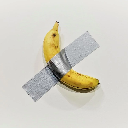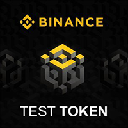-
 Bitcoin
Bitcoin $96,643.6553
0.91% -
 Ethereum
Ethereum $2,768.6102
4.64% -
 XRP
XRP $2.5850
0.85% -
 Tether USDt
Tether USDt $1.0001
0.07% -
 BNB
BNB $670.3467
3.98% -
 Solana
Solana $172.9712
2.98% -
 USDC
USDC $1.0001
0.00% -
 Dogecoin
Dogecoin $0.2468
3.37% -
 Cardano
Cardano $0.7757
1.84% -
 TRON
TRON $0.2361
-0.22% -
 Chainlink
Chainlink $17.8128
2.53% -
 Avalanche
Avalanche $25.8697
5.32% -
 Sui
Sui $3.4065
4.26% -
 Stellar
Stellar $0.3341
2.62% -
 Litecoin
Litecoin $126.8494
-0.36% -
 Toncoin
Toncoin $3.7288
4.54% -
 Shiba Inu
Shiba Inu $0.0...01567
4.17% -
 Hedera
Hedera $0.2165
2.14% -
 UNUS SED LEO
UNUS SED LEO $9.7185
-0.31% -
 Hyperliquid
Hyperliquid $24.7882
-0.62% -
 Polkadot
Polkadot $5.0655
-0.52% -
 MANTRA
MANTRA $7.5435
-0.43% -
 Bitcoin Cash
Bitcoin Cash $322.0500
2.62% -
 Bitget Token
Bitget Token $4.9553
4.83% -
 Ethena USDe
Ethena USDe $0.9995
0.16% -
 Uniswap
Uniswap $9.0787
4.29% -
 Dai
Dai $1.0001
0.02% -
 Monero
Monero $231.8651
1.42% -
 NEAR Protocol
NEAR Protocol $3.4975
5.97% -
 Pepe
Pepe $0.0...09670
5.31%
How to verify whether the transaction has been tampered with?
By verifying transaction details, reviewing the blockchain ledger, and utilizing cryptographic signatures, direct transaction verification ensures the integrity of transactions and identifies potential tampering.
Feb 22, 2025 at 11:00 pm

Key Points:
- Understanding Transaction Tampering
- Methods for Verifying Transaction Integrity
- Blockchain-Based Verification Techniques
- Third-Party Validation Services
- Importance of Secure Storage and Monitoring
How to Verify Whether the Transaction Has Been Tampered With?
Understanding Transaction Tampering
Transaction tampering is a malicious attempt to alter or manipulate transaction data after it has been broadcast to a blockchain network. This can compromise the integrity of the blockchain, allowing unauthorized alterations to transactions or the creation of fraudulent transactions.
Methods for Verifying Transaction Integrity
- Direct Transaction Verification: Examining the transaction details (e.g., sender, recipient, amount, timestamp) and comparing them to the original sent transaction. Any discrepancies indicate potential tampering.
- Blockchain Verification: Reviewing the transaction data on the blockchain ledger. If the transaction is not recorded or if its details differ from the sent transaction, it may have been tampered with.
- Cryptographic Signatures: Transactions are signed with digital signatures generated using private keys. Verifying these signatures ensures that the transaction has not been altered since its creation.
- Timestamping: Timestamps provide a chronological record of transactions. Altering a timestamp may indicate an attempt to tamper with the transaction's sequence or validity.
Blockchain-Based Verification Techniques
- Blockhash Verification: Blockchains record transaction data in blocks, each with a unique identifier called a blockhash. Verifying the blockhash associated with a transaction confirms its inclusion in the blockchain and prevents tampering.
- Transaction Merkle Tree: Transactions are organized into a Merkle tree, a hierarchical data structure that generates a root hash. Verifying the root hash ensures that all transactions within a block have not been tampered with.
Third-Party Validation Services
- Independent Auditors: External auditors can be employed to examine blockchain transactions and verify their integrity. This provides an independent assessment of the blockchain's security and prevents fraudulent activities.
- Blockchain Explorers: Blockchain explorers provide a comprehensive view of transaction data and allow users to inspect transaction details. By comparing transactions against multiple explorers, discrepancies can be detected.
Importance of Secure Storage and Monitoring
- Secure Storage of Private Keys: Private keys used to sign transactions must be stored securely to prevent unauthorized access and potential tampering. Use hardware wallets or reputable key management solutions.
- Regular Monitoring: Regularly monitoring transaction activity on the blockchain and checking for any suspicious discrepancies can help identify potential tampering attempts.
FAQs:
Q: Can any transaction be tampered with?
A: No. Blockchain technology employs cryptographic mechanisms and distributed consensus to secure transactions, making unauthorized tampering difficult.
Q: How can I protect my transactions from tampering?
A: Use secure wallets, verify transaction details thoroughly, and consider using blockchain verification techniques or third-party services.
Q: What are the consequences of transaction tampering?
A: It can compromise the integrity of the blockchain, create fraudulent transactions, or cause financial losses for users.
Q: How can I report a suspected transaction tampering incident?
A: Contact the appropriate blockchain development team, exchange, or regulatory authorities.
Q: What are the best practices for secure transaction management?
A: Use strong passwords, two-factor authentication, and regularly monitor your accounts and transactions.
Disclaimer:info@kdj.com
The information provided is not trading advice. kdj.com does not assume any responsibility for any investments made based on the information provided in this article. Cryptocurrencies are highly volatile and it is highly recommended that you invest with caution after thorough research!
If you believe that the content used on this website infringes your copyright, please contact us immediately (info@kdj.com) and we will delete it promptly.
- Here’s Why XRP Price Could Hit $6 Soon
- 2025-02-23 06:55:25
- ETH Price Prediction 2025 - Will ETH Drop by -15.90% to $2,302.40 by Feb 26, 2025?
- 2025-02-23 06:55:25
- Shiba Inu Price Prediction: SHIB's Potential Value If It Matches XRP, BNB, or Solana's Market Cap
- 2025-02-23 06:55:25
- Bitcoin Is the Ultimate Store of Value in an Era of Increasing Instability
- 2025-02-23 06:55:25
- DTX Exchange: Why Analysts Are Betting Big on the Presale
- 2025-02-23 06:45:26
- Top 5 Meme Coins to Buy Now: Arctic Pablo Coin (APC) Leads the Rally
- 2025-02-23 06:45:26
Related knowledge

What are cold storage and hot storage? Which one is safer?
Feb 22,2025 at 03:18pm
Key Points:Cold storage and hot storage are two methods of storing cryptocurrencies.Cold storage involves storing cryptocurrencies offline, while hot storage involves storing them online.Cold storage is generally considered safer than hot storage, as it is not connected to the internet and is therefore less susceptible to hacking.Cold StorageCold storag...

How to synchronize wallets in multiple devices and browsers
Feb 22,2025 at 09:18am
Key Points:Understand the different types of cryptocurrency wallets and their synchronization capabilities.Learn how to synchronize hardware wallets with multiple devices.Discover the steps involved in synchronizing software wallets across platforms.Explore the options for synchronizing mobile wallets on different devices.Gain insight into browser exten...

How to deal with theft of wallets or the leak of mnemonic words?
Feb 23,2025 at 12:36am
Key PointsUnderstanding the Different Types of Wallet TheftSteps to Take If Your Wallet Is Stolen or Mnemonic Words LeakedPreventive Measures to Protect Your Crypto AssetsFrequently Asked QuestionsHow to deal with theft of wallets or the leak of mnemonic words?Understanding the Different Types of Wallet TheftHot Wallet Theft:Hot wallets are connected to...
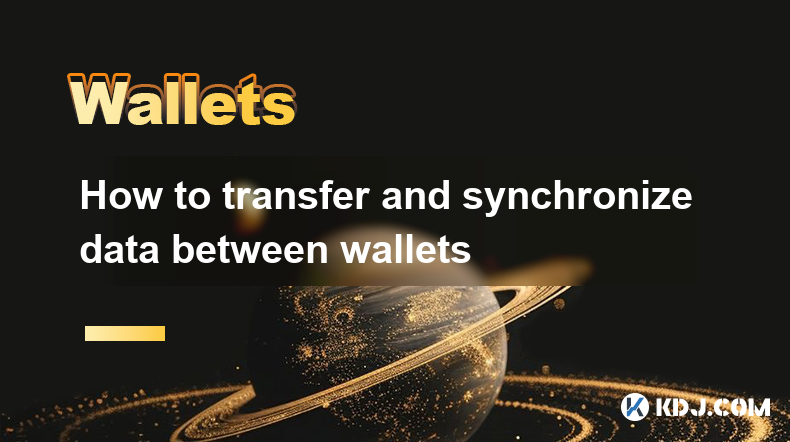
How to transfer and synchronize data between wallets
Feb 21,2025 at 12:25pm
Key Points:Understanding different wallet types and their capabilitiesIdentifying similarities and differences between walletsExploring options for transferring and synchronizing dataEnsuring data security and integrity during transferAddressing common challenges and troubleshooting tipsHow to Transfer and Synchronize Data Between Cryptocurrency Wallets...
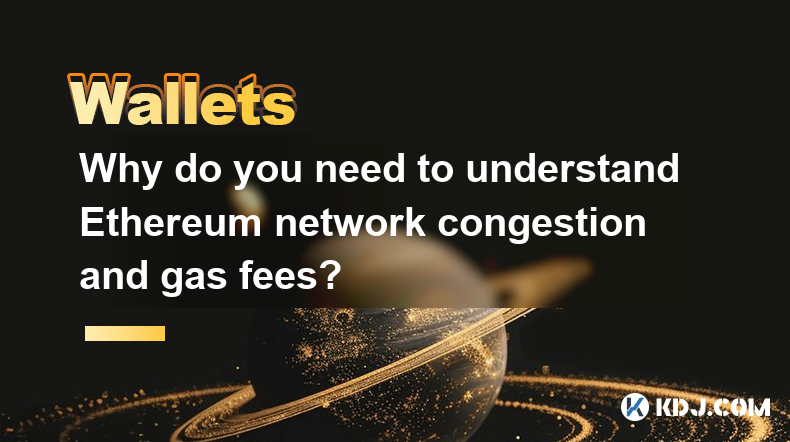
Why do you need to understand Ethereum network congestion and gas fees?
Feb 21,2025 at 04:48am
Key PointsUnderstanding Ethereum Network Congestion and Gas FeesGas Fees ExplainedFactors Affecting Network CongestionStrategies for Minimizing Gas FeesImpact of Ethereum UpgradesUnderstanding Ethereum Network Congestion and Gas FeesThe Ethereum network is a decentralized platform that hosts a vast ecosystem of decentralized applications (dApps), non-fu...
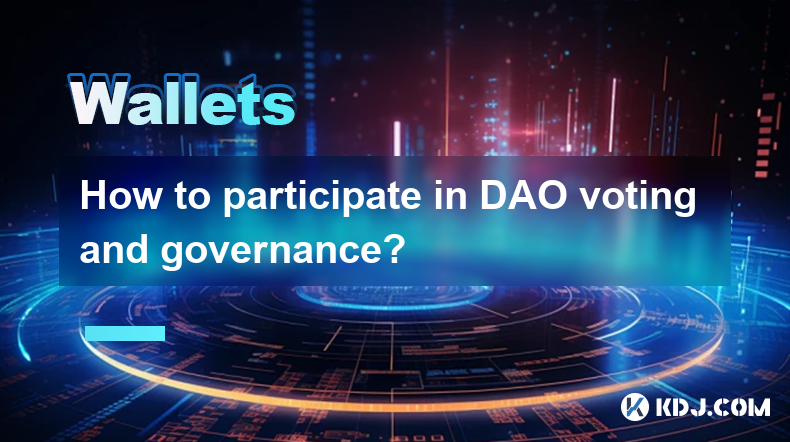
How to participate in DAO voting and governance?
Feb 21,2025 at 03:42pm
Key Points:Overview of DAO Voting and GovernanceUnderstanding DAO Structures and MembershipRole of DAO Tokens and Voting RightsParticipating in Voting and Proposal SubmissionLeveraging Governance Tools and PlatformsImpact of Voting Participation on DAO OutcomesBest Practices for Effective DAO GovernanceHow to Participate in DAO Voting and Governance1. U...

What are cold storage and hot storage? Which one is safer?
Feb 22,2025 at 03:18pm
Key Points:Cold storage and hot storage are two methods of storing cryptocurrencies.Cold storage involves storing cryptocurrencies offline, while hot storage involves storing them online.Cold storage is generally considered safer than hot storage, as it is not connected to the internet and is therefore less susceptible to hacking.Cold StorageCold storag...

How to synchronize wallets in multiple devices and browsers
Feb 22,2025 at 09:18am
Key Points:Understand the different types of cryptocurrency wallets and their synchronization capabilities.Learn how to synchronize hardware wallets with multiple devices.Discover the steps involved in synchronizing software wallets across platforms.Explore the options for synchronizing mobile wallets on different devices.Gain insight into browser exten...

How to deal with theft of wallets or the leak of mnemonic words?
Feb 23,2025 at 12:36am
Key PointsUnderstanding the Different Types of Wallet TheftSteps to Take If Your Wallet Is Stolen or Mnemonic Words LeakedPreventive Measures to Protect Your Crypto AssetsFrequently Asked QuestionsHow to deal with theft of wallets or the leak of mnemonic words?Understanding the Different Types of Wallet TheftHot Wallet Theft:Hot wallets are connected to...

How to transfer and synchronize data between wallets
Feb 21,2025 at 12:25pm
Key Points:Understanding different wallet types and their capabilitiesIdentifying similarities and differences between walletsExploring options for transferring and synchronizing dataEnsuring data security and integrity during transferAddressing common challenges and troubleshooting tipsHow to Transfer and Synchronize Data Between Cryptocurrency Wallets...

Why do you need to understand Ethereum network congestion and gas fees?
Feb 21,2025 at 04:48am
Key PointsUnderstanding Ethereum Network Congestion and Gas FeesGas Fees ExplainedFactors Affecting Network CongestionStrategies for Minimizing Gas FeesImpact of Ethereum UpgradesUnderstanding Ethereum Network Congestion and Gas FeesThe Ethereum network is a decentralized platform that hosts a vast ecosystem of decentralized applications (dApps), non-fu...

How to participate in DAO voting and governance?
Feb 21,2025 at 03:42pm
Key Points:Overview of DAO Voting and GovernanceUnderstanding DAO Structures and MembershipRole of DAO Tokens and Voting RightsParticipating in Voting and Proposal SubmissionLeveraging Governance Tools and PlatformsImpact of Voting Participation on DAO OutcomesBest Practices for Effective DAO GovernanceHow to Participate in DAO Voting and Governance1. U...
See all articles










































































